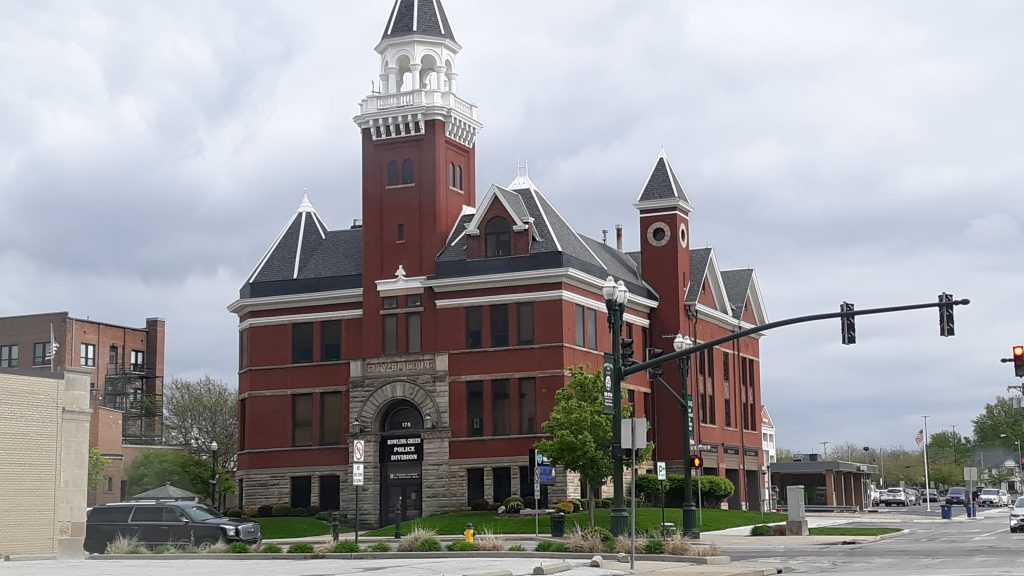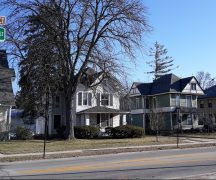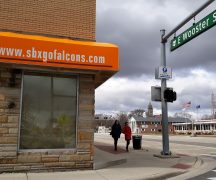By JAN LARSON McLAUGHLIN
BG Independent News
Two buildings that have withstood the tests of time in Bowling Green have now passed multiple steps to get on the local historic register.
On Wednesday evening, the Bowling Green Planning Commission voted to put Needle Hall and the Police Building on the register. The last step required will be a public hearing and vote by City Council.
Bowling Green Planning Director Heather Sayler explained that the two structures were selected as “low hanging fruit” to put on the registry.
“This is our first run through of this process with local historic preservation,” Sayler said.
Needle Hall in City Park was originally called Floral Hall, since it housed the floral exhibits for the Wood County Fair which was previously located on the grounds of the park and neighboring golf course. The structure also served as an exhibition space for needlepoint, and was later renamed Needle Hall.
The structure, built in 1884 by an unknown architect, is an octagonal-shaped pavilion constructed of wood on a rock/brick foundation with a floor plan shaped like a four-legged Greek cross.
The end of each of the four cross legs are extended beyond the central octagonal floor plan shape. Overhead is a hip-style wood shingled roof over each of the four cross legs and an octagonal shingled roof over the central octagonal plan. Double doors are located at the end of each cross leg.

The city’s Police Division Building, at 175 W. Wooster St., was built in 1892-1893, and briefly served as the Wood County Courthouse from 1894 to 1896. It later became the Bowling Green City Building, which housed various city offices and the fire station.
In 1986, the building underwent an extensive renovation to serve as the city’s police building. The exterior footprint, materials and shape were not greatly altered.
The three-story Romanesque-style structure was designed by architect David L. Stine. Its multiple gables and peaks are similar to Queen Anne rooflines, and its tower has a column-supported open belfry and balustrade.
The main entrance is set under a heavy stone arch facing West Wooster Street. Facing South Church Street are three large bays, originally built for fire equipment. The adjacent connected hose drying tower exhibits glazed oculus windows with stone surrounds, and a four-sided pyramidal roof.
The goal of the local historic registry is to preserve historic buildings and districts in the city, Sayler said.
“We thought this was a good first step,” she said. “It’s a neat thing to look at the history and appreciate it.”
The purpose of the city’s Historic Preservation Commission is to work with owners of historic properties and provide advice on how structures can be preserved – not be authoritarian, Sayler said.
“How can we work together to preserve our historic treasures,” she said.
The commission has talked about working with Wood County District Public Library on walking tours of historic areas in Bowling Green. The first is scheduled for June 11 and will include the Boomtown area.
“There are a lot of fascinating stories,” Sayler said.
In other business Wednesday evening, Sayler told the planning commission that permit requests were down so far this year – possibly due to inflation, supply chain issues, or weather.
Last year at this time, the city had received 139 zoning permit requests and 13 single-family home requests, as opposed to the 106 zoning permits and six single-family home requests this year.





